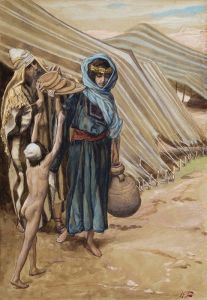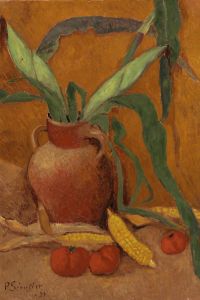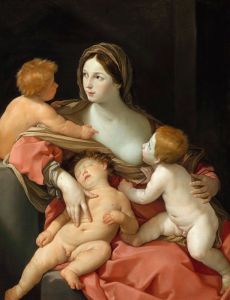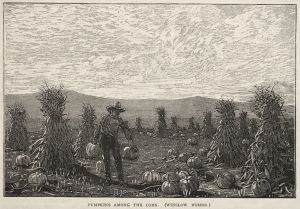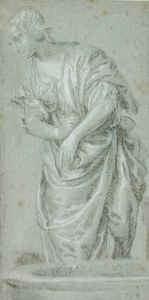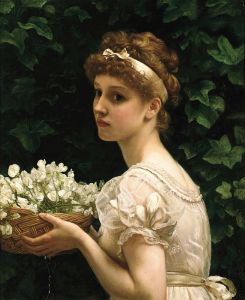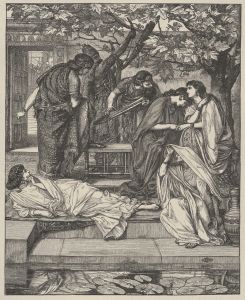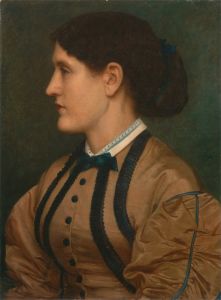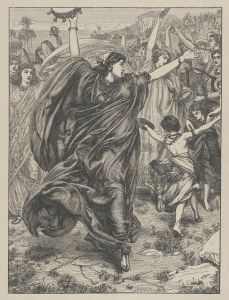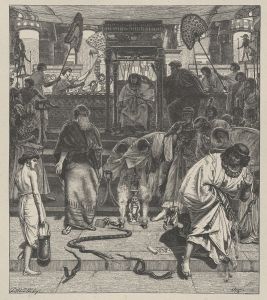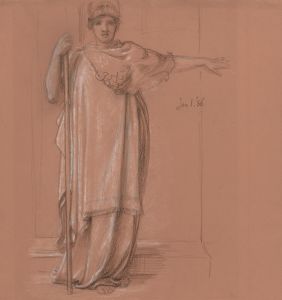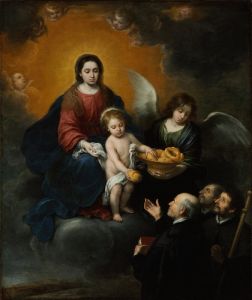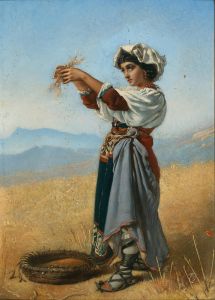
Joseph Distributes Corn
A hand-painted replica of Edward John Poynter’s masterpiece Joseph Distributes Corn, meticulously crafted by professional artists to capture the true essence of the original. Each piece is created with museum-quality canvas and rare mineral pigments, carefully painted by experienced artists with delicate brushstrokes and rich, layered colors to perfectly recreate the texture of the original artwork. Unlike machine-printed reproductions, this hand-painted version brings the painting to life, infused with the artist’s emotions and skill in every stroke. Whether for personal collection or home decoration, it instantly elevates the artistic atmosphere of any space.
"Joseph Distributes Corn" is a painting by the British artist Edward John Poynter, completed in 1863. Poynter was a prominent figure in the Victorian art scene, known for his historical and classical subjects. This particular work is an example of his interest in biblical themes, which were popular among artists of the time.
The painting depicts a scene from the Old Testament story of Joseph, a narrative found in the Book of Genesis. Joseph, the son of Jacob, was sold into slavery by his jealous brothers and eventually rose to prominence in Egypt due to his ability to interpret dreams. His interpretation of Pharaoh's dreams predicted seven years of plenty followed by seven years of famine. As a result, Joseph was appointed as a high-ranking official in charge of storing surplus grain during the years of plenty to prepare for the impending famine.
In "Joseph Distributes Corn," Poynter illustrates the moment during the famine when Joseph, now a powerful figure in Egypt, distributes grain to the people. The painting captures the bustling activity and diverse crowd gathered to receive food, emphasizing the themes of survival and benevolence. Poynter's attention to detail is evident in the depiction of the figures' varied attire and expressions, reflecting the multicultural nature of ancient Egypt as a hub of trade and civilization.
The composition of the painting is carefully structured, with Joseph positioned centrally, signifying his importance and authority. His calm and composed demeanor contrasts with the urgency and desperation of the people around him. Poynter's use of color and light enhances the dramatic effect, drawing the viewer's eye to Joseph and the sacks of grain being distributed.
"Joseph Distributes Corn" was well-received in its time, showcasing Poynter's skill in narrative painting and his ability to convey complex historical and religious themes. The work reflects the Victorian fascination with biblical stories, which were often used to convey moral lessons and explore human virtues such as wisdom, foresight, and compassion.
Edward John Poynter's career was marked by his dedication to academic art and his influence on the British art establishment. He served as the President of the Royal Academy and was knighted for his contributions to art. His works, including "Joseph Distributes Corn," continue to be appreciated for their technical proficiency and rich storytelling.
The painting is part of the collection at the Art Gallery of New South Wales in Sydney, Australia. It remains an important example of 19th-century British art and Poynter's legacy as a painter who skillfully combined historical accuracy with artistic imagination.





